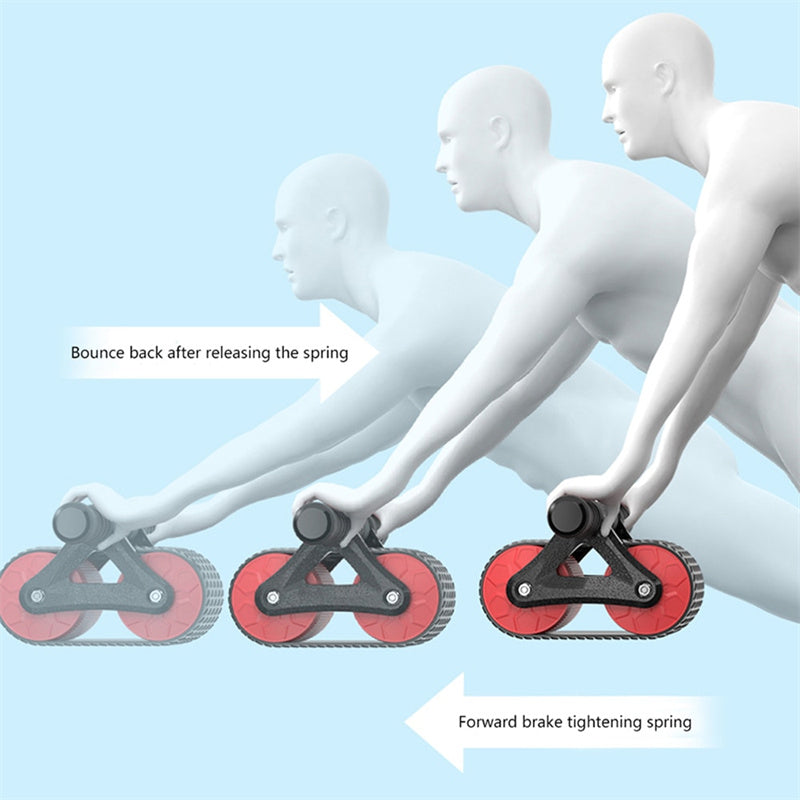Are you tired of feeling weak and lacking confidence in your own body? Do you dream of sculpted muscles and a powerful physique that radiates strength? If so, it's time to embark on a transformative journey through the world of strength training. In this article, we will dive deep into the realm of building lean muscle and uncover the incredible benefits that come with incorporating effective strength training into your fitness routine. So, prepare to ignite your inner fire, grab your weights, and join me on this empowering adventure towards unleashing your true strength!
THE SCIENCE BEHIND BUILDING LEAN MUSCLE
Building lean muscle is not just about aesthetics; it's about enhancing your overall physical and mental well-being. By understanding the science behind muscle growth, you can optimize your training to achieve maximum results. When you engage in strength training, you subject your muscles to controlled stress, causing microscopic tears in the muscle fibers. As your body repairs these tears, the muscles grow stronger and denser, resulting in increased muscle mass and improved strength. This process, known as hypertrophy, is the key to building lean, sculpted muscles that reflect your inner power and resilience.
UNDERSTANDING THE BASICS
Building lean muscle involves a process called hypertrophy, where muscle fibers increase in size and strength. When you subject your muscles to resistance exercises, such as weightlifting or bodyweight exercises, you create micro-tears in the muscle fibers. These micro-tears are a normal part of the muscle-building process.
REPAIR AND ADAPTATION
After the resistance exercises, the body enters a recovery phase where it repairs the damaged muscle fibers. This repair process involves fusing the torn muscle fibers back together and creating new protein strands, resulting in increased muscle mass. As you continue to challenge your muscles with progressively heavier weights or increased resistance, the body adapts by building more muscle fibers, leading to further gains in strength and size.
BOOSTING METABOLISM
Lean muscle is metabolically active tissue, meaning it requires more energy (calories) to maintain compared to fat tissue. By increasing your muscle mass through strength training, you elevate your resting metabolic rate (RMR), which is the number of calories your body burns at rest. This increased RMR contributes to more efficient calorie burning, even when you're not actively exercising. As a result, building lean muscle can aid in weight loss or weight maintenance, as it helps you burn more calories throughout the day.
IMPROVED BODY COMPOSITION
Building lean muscle not only increases the size and strength of your muscles but also plays a significant role in improving your body composition. As you decrease body fat through a combination of strength training and a balanced diet, your muscles become more visible, giving you a toned and defined appearance. Additionally, building lean muscle can help prevent muscle loss that often occurs with age, contributing to a healthier and more youthful physique.
BONE HEALTH AND STRENGTH
Strength training also has a positive impact on bone health. As you lift weights or perform resistance exercises, your bones experience mechanical stress, which stimulates the production of new bone tissue. This process helps increase bone density, making your bones stronger and reducing the risk of osteoporosis and fractures. Building lean muscle not only improves your muscle strength but also fortifies your skeletal system, enhancing overall physical resilience.
PSYCHOLOGICAL BENEFITS
Building lean muscle not only transforms your body but also has profound psychological benefits. As you witness the physical changes and improvements in strength, you develop a sense of accomplishment and confidence. Strength training can boost your self-esteem, enhance body image, and foster a positive mindset, leading to improved mental well-being.
Understanding the science behind building lean muscle is crucial for designing an effective strength training program and maximizing your fitness goals. By subjecting your muscles to resistance exercises, you initiate the process of hypertrophy, where muscle fibers repair and adapt, resulting in increased muscle mass and strength. The metabolic benefits of lean muscle, such as an elevated resting metabolic rate, contribute to more efficient calorie burning and aid in weight loss or maintenance. Additionally, building lean muscle improves body composition, bone health, and psychological well-being. So, embrace the science, challenge your muscles, and unlock the incredible transformation that awaits you on your journey to building lean muscle.

BENEFITS OF STRENGTH TRAINING
Strength training goes far beyond just physical appearance and offers a wide range of incredible benefits that can enhance your overall well-being. Let's delve into these benefits and discover why incorporating strength training into your fitness routine is a game-changer:
INCREASED STRENGTH AND FUNCTIONAL FITNESS
One of the most obvious benefits of strength training is improved physical strength. By engaging in resistance exercises, you challenge your muscles, leading to an increase in muscle fiber size and overall strength. This increase in strength translates into improved performance in daily activities, such as lifting heavy objects, carrying groceries, or even playing with your children. Strength training allows you to perform these tasks with greater ease, reducing the risk of injury and enhancing your overall quality of life.
ENHANCED METABOLISM AND WEIGHT MANAGEMENT
Strength training plays a crucial role in boosting metabolism. As you build lean muscle mass through resistance exercises, your body's resting metabolic rate increases. This means that even when you're at rest, your body burns more calories to maintain the muscle tissue. This metabolic boost can contribute to more efficient calorie burning and aid in weight management. Additionally, strength training helps preserve muscle mass while you're losing weight, ensuring that the weight lost comes primarily from fat rather than muscle.
IMPROVED BONE HEALTH AND REDUCED RISK OF OSTEOPOROSIS
Strength training is not only beneficial for your muscles but also for your bones. It stimulates bone growth and helps maintain bone density, reducing the risk of osteoporosis and fractures as you age. By subjecting your bones to the stress of resistance exercises, you stimulate bone cells to become stronger and more resilient. This is especially crucial for women, as they are more prone to osteoporosis due to hormonal changes during menopause.
ENHANCED JOINT STABILITY AND INJURY PREVENTION
Strong muscles help support and stabilize your joints, reducing the risk of injuries and improving overall joint health. Strength training exercises target the muscles surrounding your joints, enhancing their strength and stability. This can be particularly beneficial for individuals with joint conditions such as arthritis or those recovering from joint injuries. By strengthening the muscles around the joints, you provide better support, reduce stress on the joints, and improve overall joint function.
IMPROVED BODY COMPOSITION AND AESTHETICS
While strength training is not solely about physical appearance, it does play a significant role in improving body composition. As you build lean muscle and reduce body fat through resistance exercises, you'll notice positive changes in your physique. Your muscles become more defined and toned, giving you a sculpted appearance. Building lean muscle can transform your body composition and help you achieve the aesthetic goals you desire.
ENHANCED MENTAL WELL-BEING AND CONFIDENCE
Engaging in regular strength training can have a profound impact on your mental well-being. Exercise, including strength training, releases endorphins, which are natural mood boosters and stress relievers. Strength training has been shown to reduce symptoms of depression and anxiety and improve overall mental health. Additionally, as you witness the progress and improvements in your physical strength and appearance, your self-confidence and self-esteem are likely to soar. Strength training empowers you to push beyond your limits, overcome challenges, and develop mental resilience that extends beyond the gym.
LONGEVITY AND AGAING GRACEFULLY
Strength training has been associated with improved longevity and healthy aging. As you build muscle mass and strength, you increase your functional capacity and ability to perform daily tasks as you age. Strength training also helps counteract the natural decline in muscle mass and strength that occurs with aging, known as sarcopenia. By engaging in regular strength training throughout your life, you can maintain muscle mass, mobility, and independence well into your senior years.
Incorporating strength training into your fitness routine is a game-changer, offering numerous benefits that extend beyond physical appearance. From increased strength and functional fitness to improved metabolism, bone health, and mental well-being, strength training has the power to transform your life. So, embrace the challenge, unleash your inner strength, and experience the remarkable benefits that await you on your strength training journey.

DESIGNING AN EFFECTIVE STRENGTH TRAINING ROUTINE
Now that we understand the importance and benefits of strength training, it's time to craft a personalized and effective routine that will guide you towards your goals. Here are some essential considerations when designing your strength training routine:
SET CLEAR GOALS
Before diving into any exercise program, it's crucial to establish clear goals. Do you want to build overall strength, increase muscle mass in specific areas, improve athletic performance, or enhance aesthetics? Setting specific, measurable, attainable, relevant, and time-bound (SMART) goals will help you stay focused and motivated throughout your journey.
CHOOSE THE RIGHT EXERCISE
When selecting exercises for your strength training routine, it's essential to include a mix of compound and isolation exercises. Compound exercises, such as squats, deadlifts, bench presses, and pull-ups, target multiple muscle groups simultaneously, stimulating overall strength and functional fitness. Isolation exercises, such as bicep curls or tricep extensions, focus on specific muscle groups, allowing you to target specific areas for more defined results. By incorporating a combination of both types of exercises, you can develop a well-rounded physique.
PROGRESSIVE OVERLOAD
To continue building lean muscle and strength, it's crucial to apply the principle of progressive overload. This means gradually increasing the intensity, resistance, or repetitions of your exercises over time. By challenging your muscles with progressively heavier weights or increased resistance, you stimulate continued growth and adaptation. This can be achieved by adding weight to your lifts, increasing the number of sets or repetitions, or decreasing rest periods between sets. Progressive overload ensures that your muscles are consistently challenged, leading to ongoing progress and preventing plateaus.
REST AND RECOVERY
While it's tempting to push yourself to the limit every day, adequate rest and recovery are essential for optimal muscle growth and injury prevention. Allow your muscles time to recover and repair by incorporating rest days into your routine. Aim for at least one to two days of rest per week, during which you can engage in active recovery activities such as stretching, yoga, or light cardio. Additionally, prioritize sleep, as it plays a crucial role in muscle recovery and growth. Aim for seven to nine hours of quality sleep each night to support your strength training efforts.
PROPER FORM AND TECHNIQUE
Maintaining proper form and technique during strength training exercises is crucial for safety and effectiveness. Incorrect form can lead to injuries and limit the effectiveness of the exercise. Take the time to learn the correct form for each exercise, and if necessary, seek guidance from a fitness professional or personal trainer. Start with lighter weights or resistance and focus on mastering the correct technique before progressing to heavier loads. Remember, quality of movement is more important than the quantity of weight lifted.
BALANCED TRAINING SPLIT
To ensure balanced muscle development and prevent overuse injuries, it's essential to design a well-rounded training split. This involves dividing your strength training routine into different muscle groups or movement patterns and allocating specific days or sessions to each. For example, you might have a day dedicated to lower body exercises, another for upper body exercises, and additional sessions for core or full-body workouts. This balanced approach allows for adequate recovery while targeting all major muscle groups over the course of the week.
FLEXIBILITY AND ADAPTABILITY
Your strength training routine should be flexible and adaptable to accommodate your changing needs and goals. As you progress and become more experienced, you may need to modify your routine to continue challenging your muscles. This can involve adding more advanced exercises, increasing the intensity or volume, or experimenting with different training techniques. Regularly assess your progress, adjust your routine as needed, and keep your workouts fresh and engaging to maintain motivation and enjoyment.
SEEK GUIDANCE IF NEEDED
If you're new to strength training or unsure where to start, consider consulting with a fitness professional or personal trainer. They can help design a personalized program tailored to your goals and ensure proper form and technique, minimizing the risk of injury.
Remember, designing an effective strength training routine is a dynamic process that evolves as you progress and grow. It's important to listen to your body, respect your limits, and gradually increase the intensity and complexity of your workouts. By considering these essential factors and tailoring your routine to your specific goals, you can create a strength training program that sets you up for success on your journey to building lean muscle and achieving your desired fitness outcomes.

CONCLUSION
Congratulations, my friend! You have taken the first step towards uncovering your inner strength and achieving a sculpted, powerful physique. By embracing the wonders of strength training, you are embarking on a life-changing journey that goes far beyond physical transformation. Building lean muscle will not only enhance your strength, power, and endurance but also boost your confidence, mental resilience, and overall well-being. So, strap on your determination, grab your weights, and let the transformative power of strength training propel you towards a stronger, healthier, and more empowered version of yourself. Remember, your inner strength is waiting to be unleashed, so take the leap and embrace the incredible journey that lies ahead!


























































